I, What is grinding wheel?
Grinding wheel is the most important kind of grinding tool in grinding process. The grinding wheel is a porous body made by adding a binder to the abrasive and by pressing, drying and roasting. Therefore, the grinding wheel is mainly composed of abrasive, binder and porosity, among which, the abrasive is responsible for cutting, the binder is used to fix the abrasive particles, and the porosity is used to help chip storage, chip removal, heat dissipation, cooling, etc.
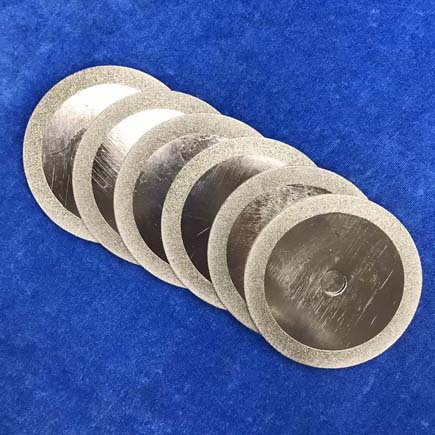
II, The working mechanism of grinding wheel
Through high-speed rotation, the grinding wheel can be coarse grinding, semi-fine grinding and fine grinding of the outer circle, inner circle, plane and various shapes of the metal or non-metal workpiece, as well as grooving and cutting.
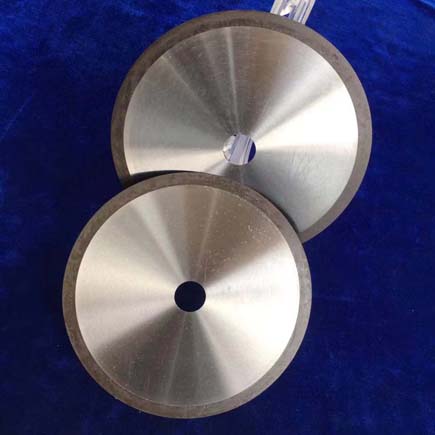
III, Classification of grinding wheel
(1) Classification by shape:
Flat grinding wheel, cup grinding wheel, saucer grinding wheel, bowl grinding wheel, resin bond diamond wheels, vitrified cbn grinding wheel, vitrified bond diamond grinding wheel, metal bonded diamond grinding wheels, vacuum brazed diamond grinding wheel, etc.
(2) According to the type of abrasive:
Ordinary abrasive (corundum and silicon carbide, etc.) grinding wheel and natural abrasive superhard abrasive and (diamond and cubic boron nitride, etc.) grinding wheel
(3) Classification by binder:
Ceramic binder V, resin binder B, rubber binder R, metal binder M, composite binder, etc. CBN grinding wheel
(4) Influencing factors of grinding wheel
1, abrasive
The role of abrasive is mainly responsible for cutting, so it must be sharp, and has a high hardness, good heat resistance and a certain toughness. Abrasive can be divided into three categories: nitride system (brown corundum A, white corundum WA, chrome corundum PA), carbide system (silicon carbide GC, boron carbide BC, etc.), high hardness class (cubic boron nitride, artificial diamond)
2. Particle size
Particle size refers to the size of the abrasive particle size. The particle size is divided into two types: abrasive particle and micro-powder. For abrasives with a particle size greater than 40μm, they are called abrasive particles. With the screening method, the particle size is indicated by the number of holes per inch in the screen through which the abrasive particles pass. For example, a 60 # abrasive particle indicates that it is just large enough to pass through a screen with 60 holes per inch of length. For abrasives with particle size less than 40μm, it is called micro-powder. Classification by micromeasurement method, with W and the following number to indicate the particle size, the value after W represents the actual size of the powder. For example, W20 indicates that the actual size of the powder is 20μm, which is mainly related to the roughness and productivity of the machined surface. Coarse grinding, grinding allowance is large, the required surface roughness value is larger, should be selected coarser abrasive. Because of coarse abrasive grains and large pores, the grinding depth can be larger, and the grinding wheel is not easy to plug and heat. In fine grinding, the margin is small, the roughness value is low, and a finer grinding particle can be selected. Generally speaking, the finer the particle, the better the grinding surface roughness.
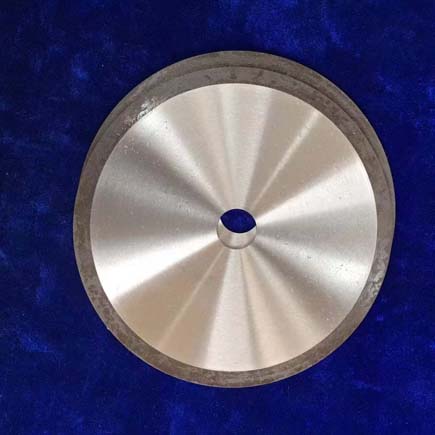
3. Binder
1) Ceramic bonded diamond grinding wheel V: glass is the main raw material of the bond, a certain amount of auxiliary filler is added, and diamond abrasive is fully mixed with a certain concentration.
The advantages are high heat resistance, sharp cutting, high grinding efficiency, it is not easy to heat and plug in the grinding process, the thermal expansion is small, easy to control the processing accuracy, and the dressing is easier, suitable for processing PCD, PCBN.
2) Resin bond diamond grinding wheel B: thermoplastic phenolic resin as the main material of the bond, add a certain amount of auxiliary fillers, and diamond abrasive according to a certain concentration of fully mixed after hot pressing.
The abrasive holding force is slightly lower than the metal binder, good self-sharpness, not easy to plug, the binder itself has a certain elasticity, not easy to cause load, suitable for cemented carbide, high-speed steel.
3) Metal bonded diamond grinding wheel M is made of copper tin or copper zinc as bonding raw materials, adding a certain amount of auxiliary fillers, and diamond abrasive according to a certain concentration of fully mixed.
The grinding wheel has high bonding strength, strong abrasive retention, good heat and wear resistance, but the self-sharpness is relatively poor, easy to clog, heat, dressing is also more difficult, and the application range is small.
Wear resistance: metal bonded diamond wheel > resin bonded diamond wheel ≈ ceramic bonded diamond wheel;
Efficiency: Ceramic bonded diamond wheel > resin bonded diamond wheel > Metal bonded diamond wheel;
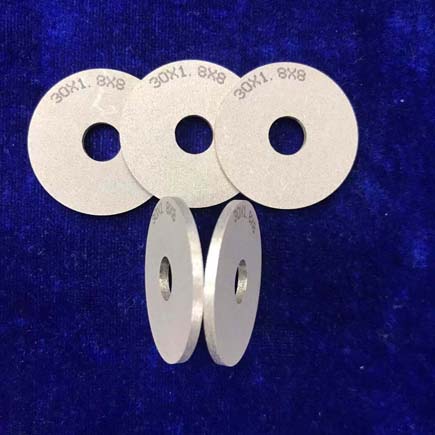
4, grinding wheel hardness
Unlike in physics, hardness refers to “the ability of a material to locally resist hard objects pressing into its surface.”
Grinding wheel hardness is a unique concept in the abrasive abrasive industry, referring to the ability of the binder to hold the abrasive or the difficulty of the abrasive particles falling off the grinding wheel, the hardness of the grinding wheel, that is, the holding force of the binder on the abrasive particles is large, and the abrasive particles are difficult to fall off, which is manifested as the self-sharpness of the grinding wheel is poor, and the reverse is good.
The hardness of the grinding wheel is determined by the bonding strength of the bond, not by the hardness of the abrasive. The same abrasive can be made into a grinding wheel with different hardness, which mainly depends on the performance of the bond, the amount and the process of grinding wheel manufacturing.
The general principle of selecting the hardness of the grinding wheel is that when processing soft metal, the working abrasive wear of the grinding wheel is slow and does not need to be removed too early, then the hard grinding wheel is selected. When processing hard metal, the working abrasive wear of the grinding wheel is faster. In order to timely make the dull abrasive fall off, thereby exposing the new abrasive with sharp edges (that is, self-sharpening), the soft grinding wheel is selected.
Choosing the hardness of the grinding wheel is actually choosing the self-sharpness of the grinding wheel. I hope that sharp abrasive particles do not fall off too early, and do not fall off when worn dull.
5. Organization
The characterization of tissue refers to the proportional relationship between abrasive particles, adhesives, and pores. The larger the proportion of abrasive particles in the total grinding wheel, the denser the grinding wheel tissue and the smaller the porosity.
The grinding wheel is divided into three levels: tight, medium and loose. Tight grinding wheel: the tissue number is 0-3, the abrasive particles account for more than 55% of the volume of the grinding wheel. Tight grinding wheel grinding tools are suitable for grinding under gravity. In form grinding or precision grinding, the tightly organized wheel can maintain the formability of the wheel and obtain a small roughness. Medium organization grinding wheel: the organization number is 4-7, and the abrasive particles account for 54-58% of the volume of the grinding wheel. Suitable for general hardening steel and tool grinding. Loose tissue grinding wheel: the tissue number is 8-12, and the abrasive particles account for 46-38% of the volume of the grinding wheel. Loose tissue grinding wheel is not easy to block, used in surface grinding, internal grinding and other processes with large grinding contact area, as well as grinding heat-sensitive materials or thin workpieces.
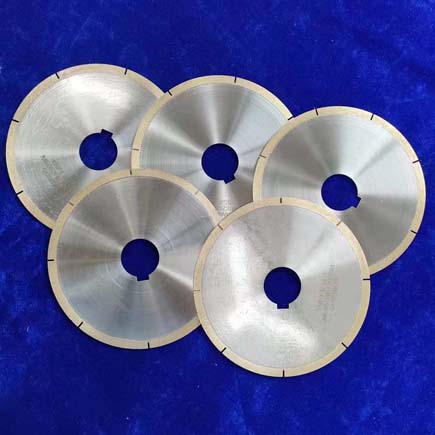
VI. Key parameter indicators
1) Self-sharpness; The self-sharpness of the grinding wheel means that the abrasive particles will be broken or fall off under the grinding force and thermal impact after being blunted, so as to form a new cutting edge and keep the grinding ability of the grinding wheel. The hardness of grinding wheel actually reflects the self-sharpness of grinding wheel.
The grinding wheel is hard, that is, the holding force of the binder on the abrasive particles is large, and the abrasive particles are difficult to fall off, which is manifested as the self-sharpening of the grinding wheel is poor, and the self-sharpening is good.
2) Durability: the two indicators of self-sharpness and durability are opposite, the better the self-sharpness, the worse the durability, so a balance should be struck between the two.
Research and analysis of cutting tools for superhard materials